Zinc oxide: Suppression or better supplementation?
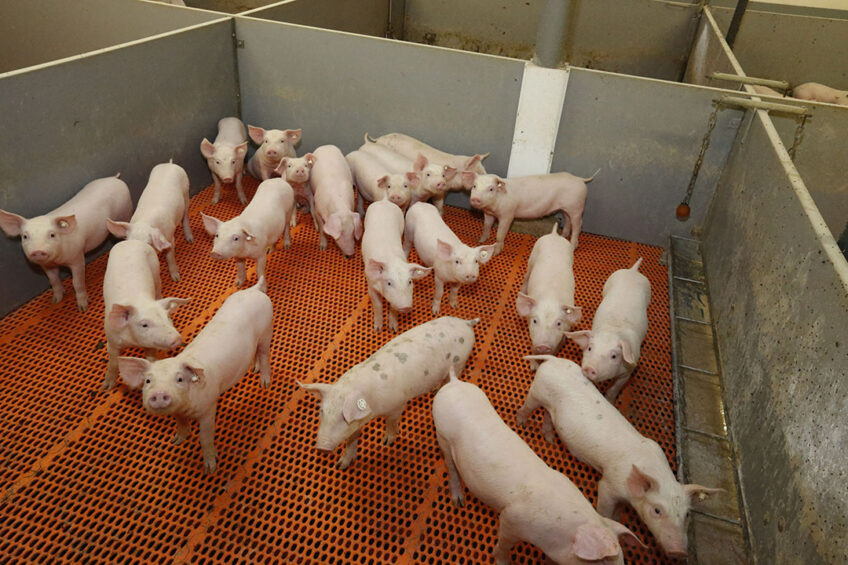
The year 2022 marks a change in the usage of zinc in the European Union – pharmacological levels of zinc oxide can no longer be given to just-weaned piglets. However, that does not mean that zinc is entirely off the table. Can it be provided in smarter ways?
The ban of pharmacological usage of zinc oxide (ZnO) has arrived in Europe. For more than 30 years, pharmacological levels of ZnO have been widely used with no doubt about its efficacy, although there is still no clear consensus on the mode of action by which ZnO is able to control diarrhoea in pigs so efficiently. That may be because ZnO has a multitude of pathways to improve the animals’ gut health and control the proliferation of pathogenic bacteria (see Figure 1).
Figure 1 – The polyvalent mode of action of zinc oxide in piglets.
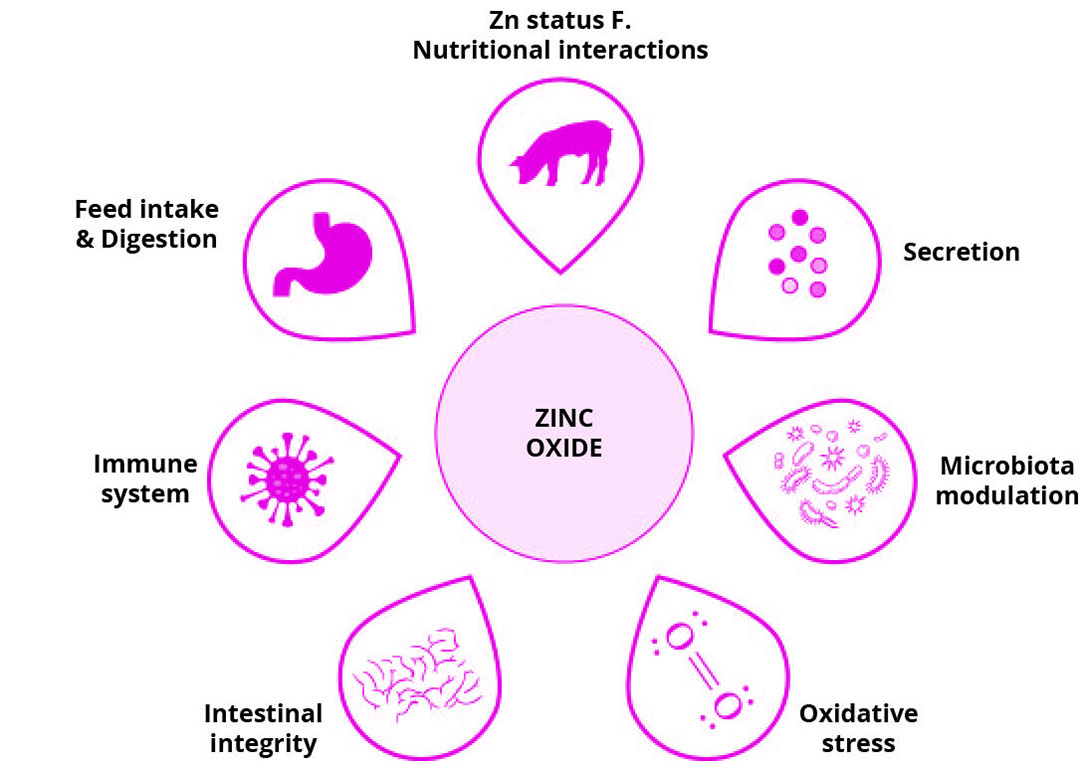
Zero zinc diets
First of all, zinc is an essential nutrient, playing an important role in the body, such as modulation of the immune system, antioxidant mechanisms and paracellular permeability. Zinc deficiency can lead to a reduction in feed intake, increase of paracellular permeability, weakness of the immune system, etc. In other words, no feeding strategy should be entirely void of zinc, as the mineral absolutely needs to be supplied. In addition to the correct supply of zinc in diets, weaned piglets have low and variable feed intake, which can lead to low ingestion of the nutrient. Those factors combined lead to the limited storage of zinc in the pig’s body and may lead to a transient deficiency for a few days post-weaning. Yet not all zinc sources are created equal. The regulatory pressure to reduce the use of pharmacological levels of ZnO raised the question of the difference between the sources. For example, why supply 3,000 ppm? Couldn’t that be less? At Animine, those questions led to a series of trials looking into the physicochemical properties of the various sources and their behaviour in the animal’s gut.
European research programme
With the goal of better understanding the mode of action of ZnO, the programme Zinc0Supp was set up, involving several universities and addressing the suppression of pharmacological levels of ZnO. The study of the supplementation of a potentiated zinc source (HiZox by Animine) formed part of that research. The programme is expected to yield more information, but some preliminary results are described here.
Figure 2 – Dose response of piglets fed different sources of zinc.
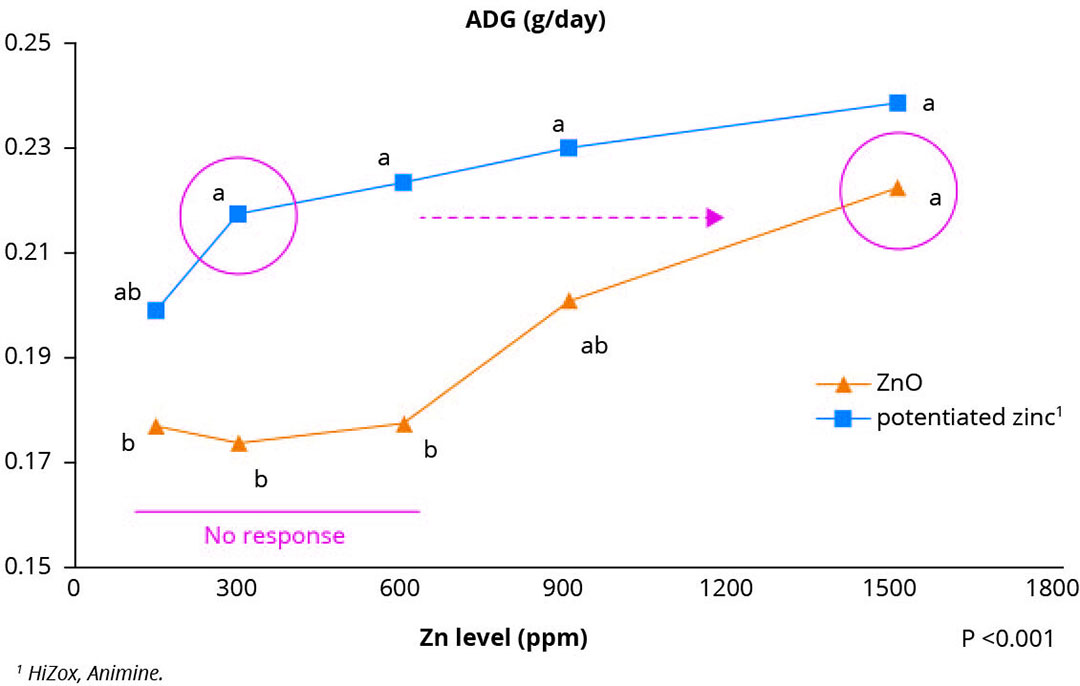
Dose-response of zinc in weaned piglets
A trial performed in 2021 at a commercial facility, supervised by the Free University of Berlin, Germany, compared the performance effects of supplementing either standard ZnO or the potentiated zinc at 150, 300, 600, 900 and 1,500 ppm. The results (see Figure 2) showed no effect on average daily gain (ADG) and feed intake up to 600 ppm of standard ZnO and only at 900 ppm a significant dose response to ZnO supplementation is observed, up to 1,500 ppm. The potentiated zinc, however, showed improvements compared to standard ZnO already at 150 ppm, increasing the ADG by 10% and feed intake by 9% in piglets. The dose response of the potentiated zinc improved at every dose, reaching a plateau at 300 ppm of supplementation. The experiment confirmed that zinc sources are not the same, and selecting the right source allows reduction of the amount included while sustaining performance.
Figure 3 – Faecal index of piglets fed different sources of zinc. On the left, the low-birth-weight group, on the right, piglets with normal birth weight.
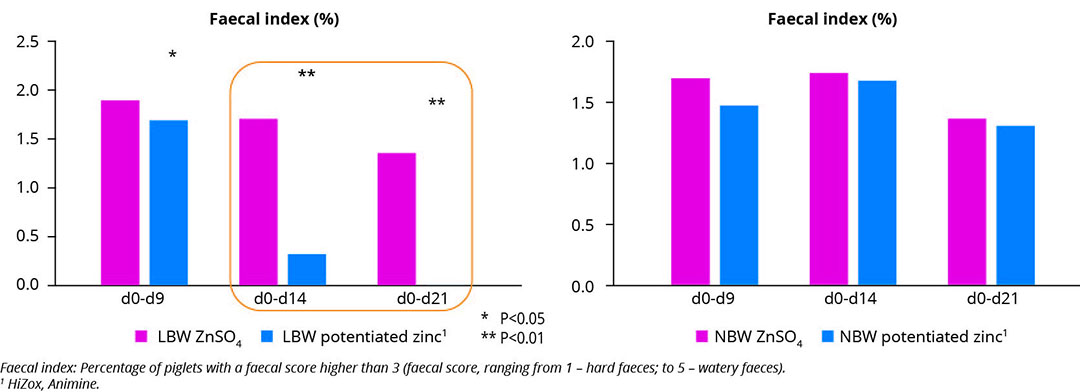
Zinc source impacting birth weight
In a second trial performed by Bologna University, Italy, the zinc source effect was evaluated on nursery pigs that were born with either low (0.92 kg) or normal (1.37 kg) birth weight. At weaning (25 days), those piglets had 6.3 kg and 7.8 kg for low and normal birth weight, respectively. Zinc was supplemented at 120 ppm from either ZnSO4 source or potentiated zinc. Piglets fed potentiated zinc displayed a significantly improved faecal index compared to piglets fed ZnSO4 during the whole trial period (0–21 days) for both groups (low and normal birth weight) (see Figure 3). The ADG was also improved when the potentiated zinc was supplemented. Even though those effects were observed in both groups, the improvement was more pronounced in lowweight piglets, demonstrating the ability of potentiated zinc to support the weak piglets’ gut function and to favour better group homogeneity.
Presenting new opportunities
The ban of ZnO puts pressure on the industry to find solutions to deal with post-weaning diarrhoea. It also presents an opportunity to better understand the sources that have been used for decades and how doses can be optimised when using a potentiated zinc source.
Authors: Agathe Roméo, R&D Manager, and Jennifer Maurin, Marketing & Sales Director, Animine
 Beheer
Beheer
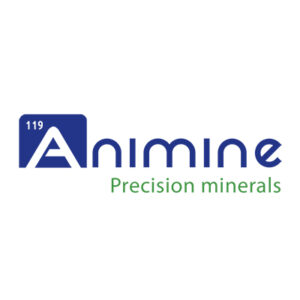
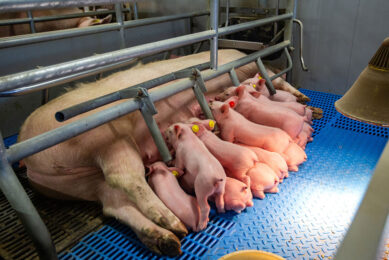
 WP Admin
WP Admin  Bewerk bericht
Bewerk bericht